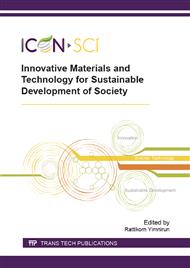p.283
p.287
p.291
p.295
p.299
p.304
p.311
p.316
p.321
Surface Modification of Composite Membranes by Coating PVA/TiO2 Layer
Abstract:
Water pollution comprises all of those compounds that change the quality of groundwater and surface water, therefore reducing the suitability of natural water for human use and other vital processes. These compounds result from human activities, especially those that are industrial, agricultural and domestic.The polyamide thin film composite reverse osmosis membranes become important in desalination of sea water and brackish water or waste water. However the polyamide reverse osmosis membranes tend to fouling due to their hydrophobic and rough surfaces. In this study flux and rejection of waste water from aluminum production industry were obtained during filtration process by using modified commercial composite membranes. Amount of fouling was evaluated with unmodified and modified membranes. Rejection of iron particles and PH of feed and permeate solutions were determined after filtration process. Results shows that modified membranes were performed higher metal ion rejection and antifouling performance than unmodified membranes.
Info:
Periodical:
Pages:
299-303
Citation:
Online since:
October 2015
Authors:
Keywords:
Price:
Сopyright:
© 2015 Trans Tech Publications Ltd. All Rights Reserved
Share:
Citation:



